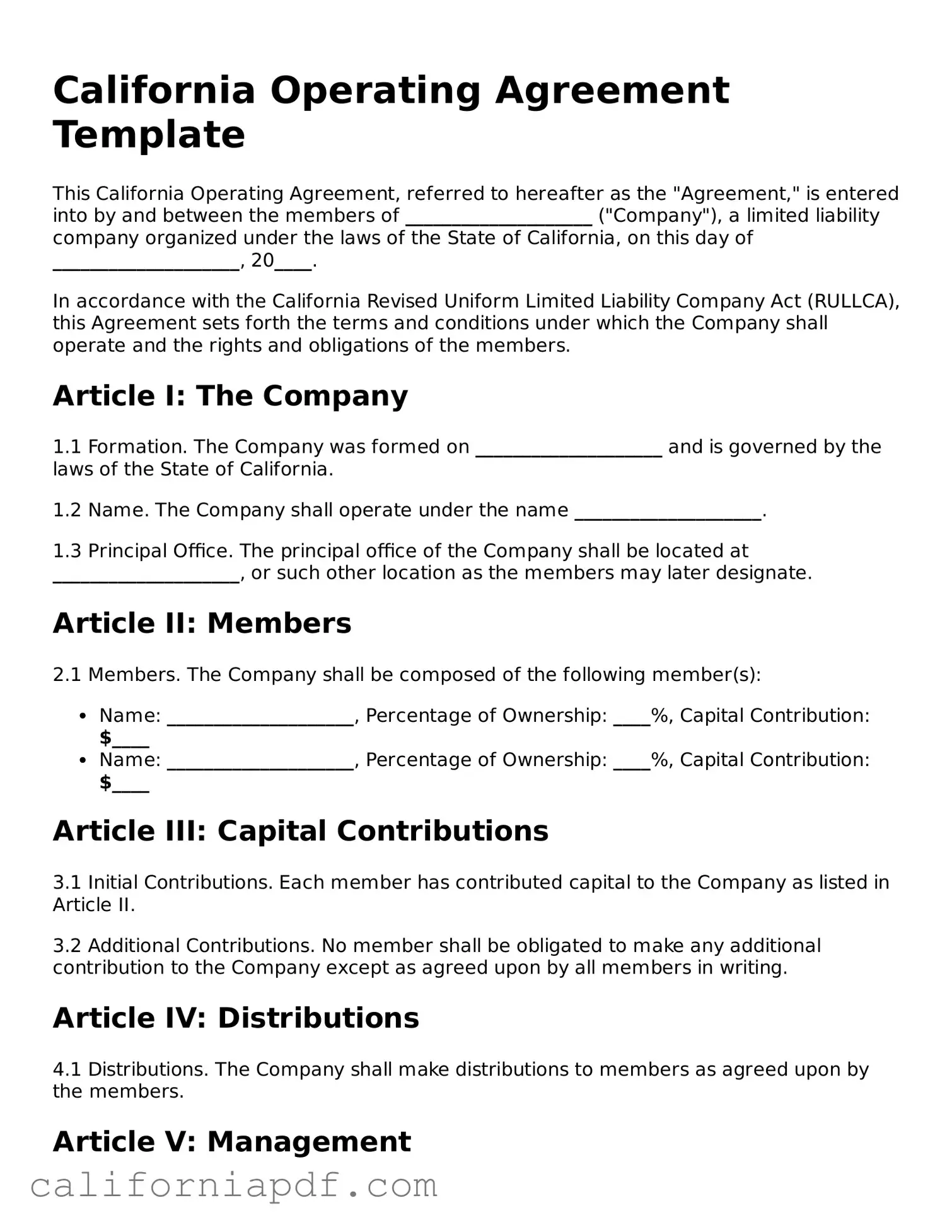California Operating Agreement Template
This California Operating Agreement, referred to hereafter as the "Agreement," is entered into by and between the members of ____________________ ("Company"), a limited liability company organized under the laws of the State of California, on this day of ____________________, 20____.
In accordance with the California Revised Uniform Limited Liability Company Act (RULLCA), this Agreement sets forth the terms and conditions under which the Company shall operate and the rights and obligations of the members.
Article I: The Company
1.1 Formation. The Company was formed on ____________________ and is governed by the laws of the State of California.
1.2 Name. The Company shall operate under the name ____________________.
1.3 Principal Office. The principal office of the Company shall be located at ____________________, or such other location as the members may later designate.
Article II: Members
2.1 Members. The Company shall be composed of the following member(s):
- Name: ____________________, Percentage of Ownership: ____%, Capital Contribution: $____
- Name: ____________________, Percentage of Ownership: ____%, Capital Contribution: $____
Article III: Capital Contributions
3.1 Initial Contributions. Each member has contributed capital to the Company as listed in Article II.
3.2 Additional Contributions. No member shall be obligated to make any additional contribution to the Company except as agreed upon by all members in writing.
Article IV: Distributions
4.1 Distributions. The Company shall make distributions to members as agreed upon by the members.
Article V: Management
5.1 Management of the Company is vested in the members. Decisions shall be made by a vote of the members with each member having a vote proportionate to their percentage of ownership in the Company.
Article VI: Meetings
6.1 Annual Meeting. The Company shall hold an annual meeting of the members at a time and place selected by the members for the purpose of reviewing the company's performance and planning for the future.
Article VII: Amendments
7.1 This Agreement can be amended only by a written agreement signed by all members.
Article VIII: Dissolution
8.1 The Company may be dissolved as agreed upon by the members or as required by the laws of the State of California.
In witness thereof, the undersigned have executed this Agreement as of the effective date first above written.
Member Signature: ____________________ Date: ____________________
Member Signature: ____________________ Date: ____________________
